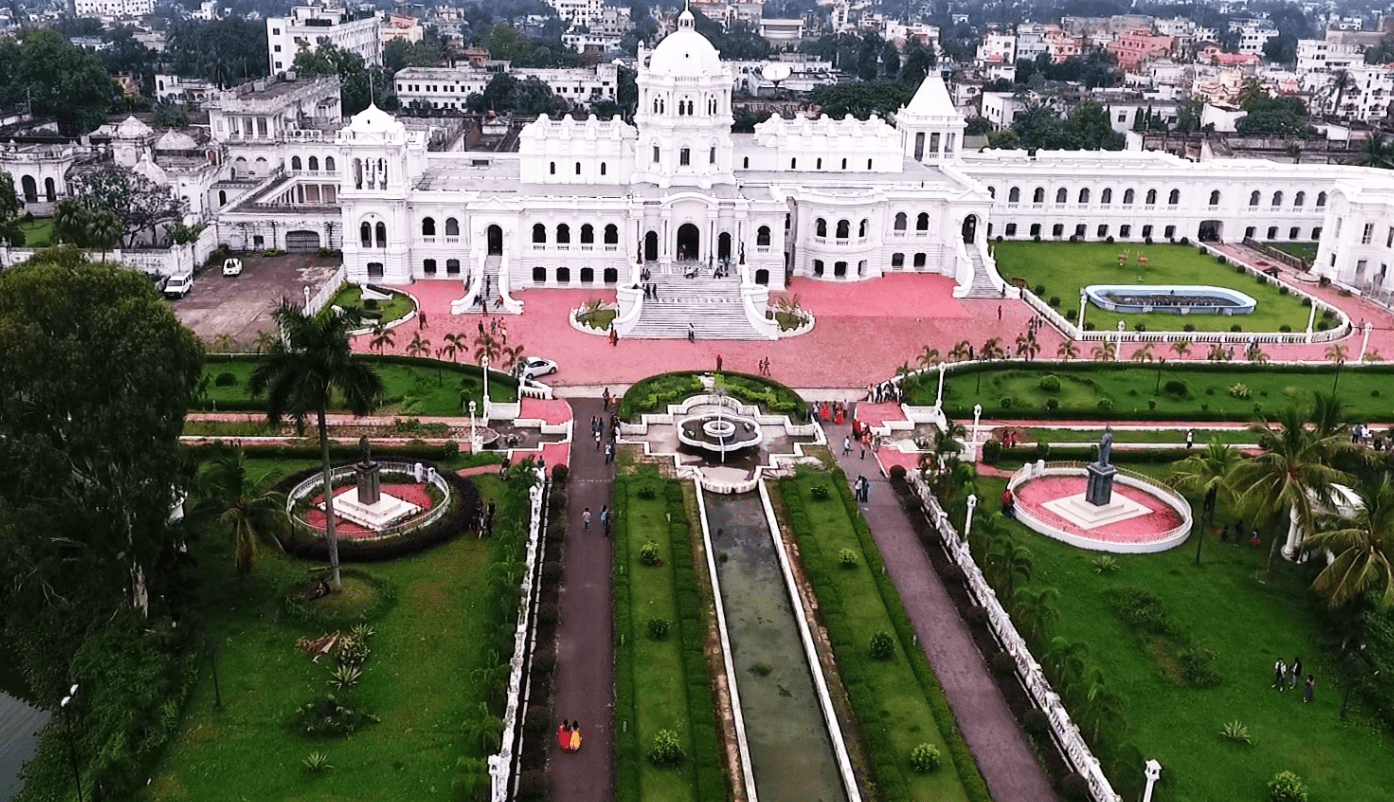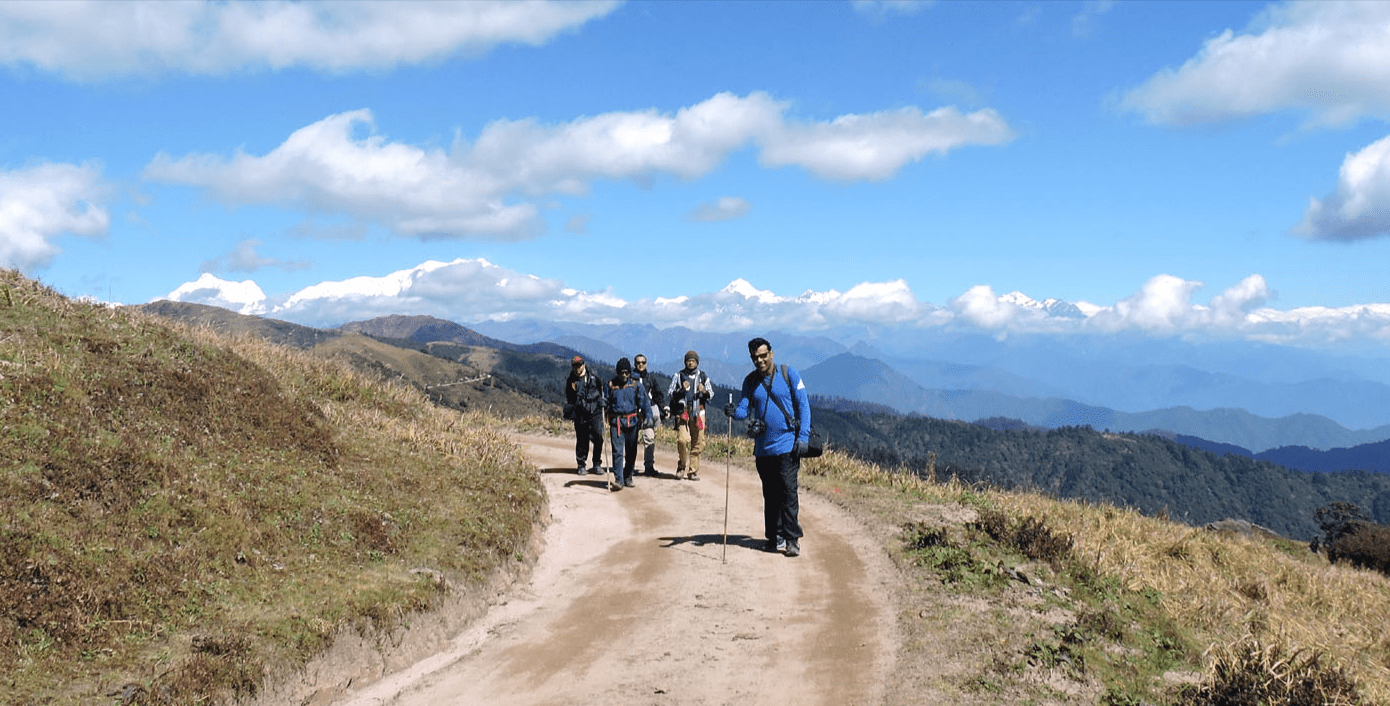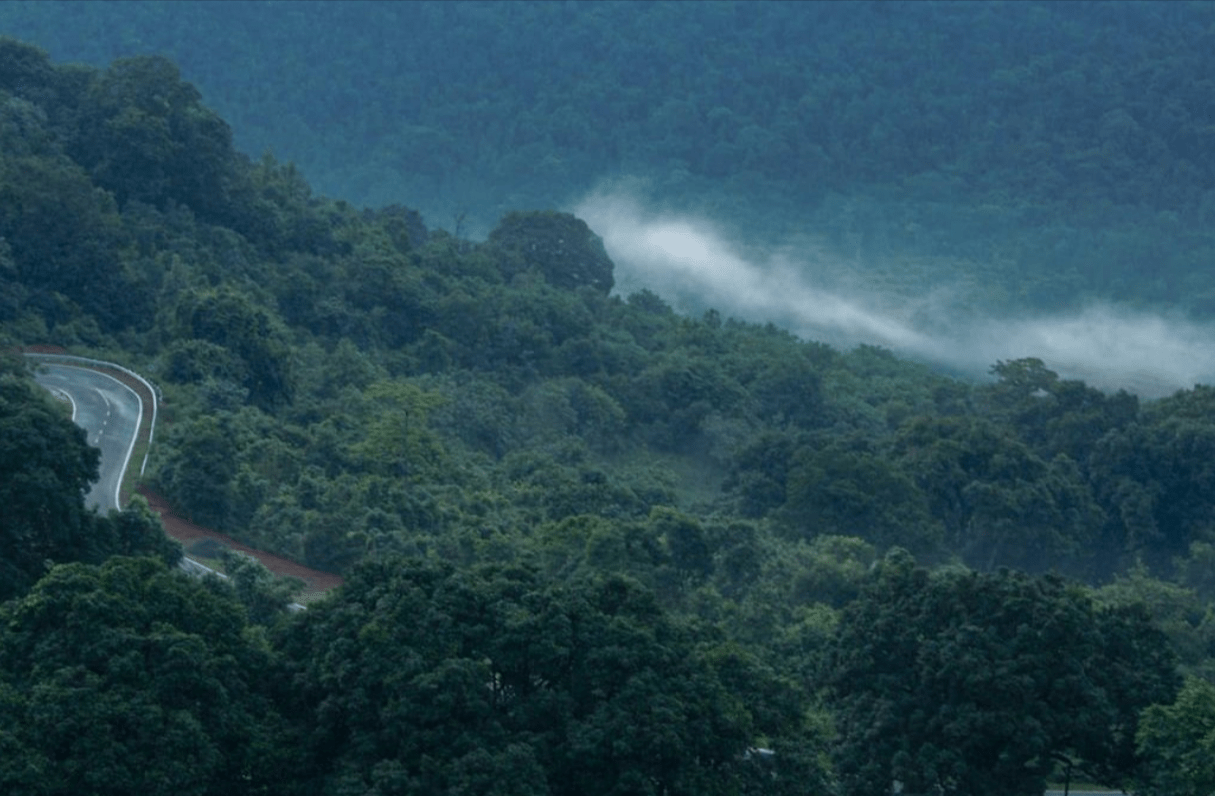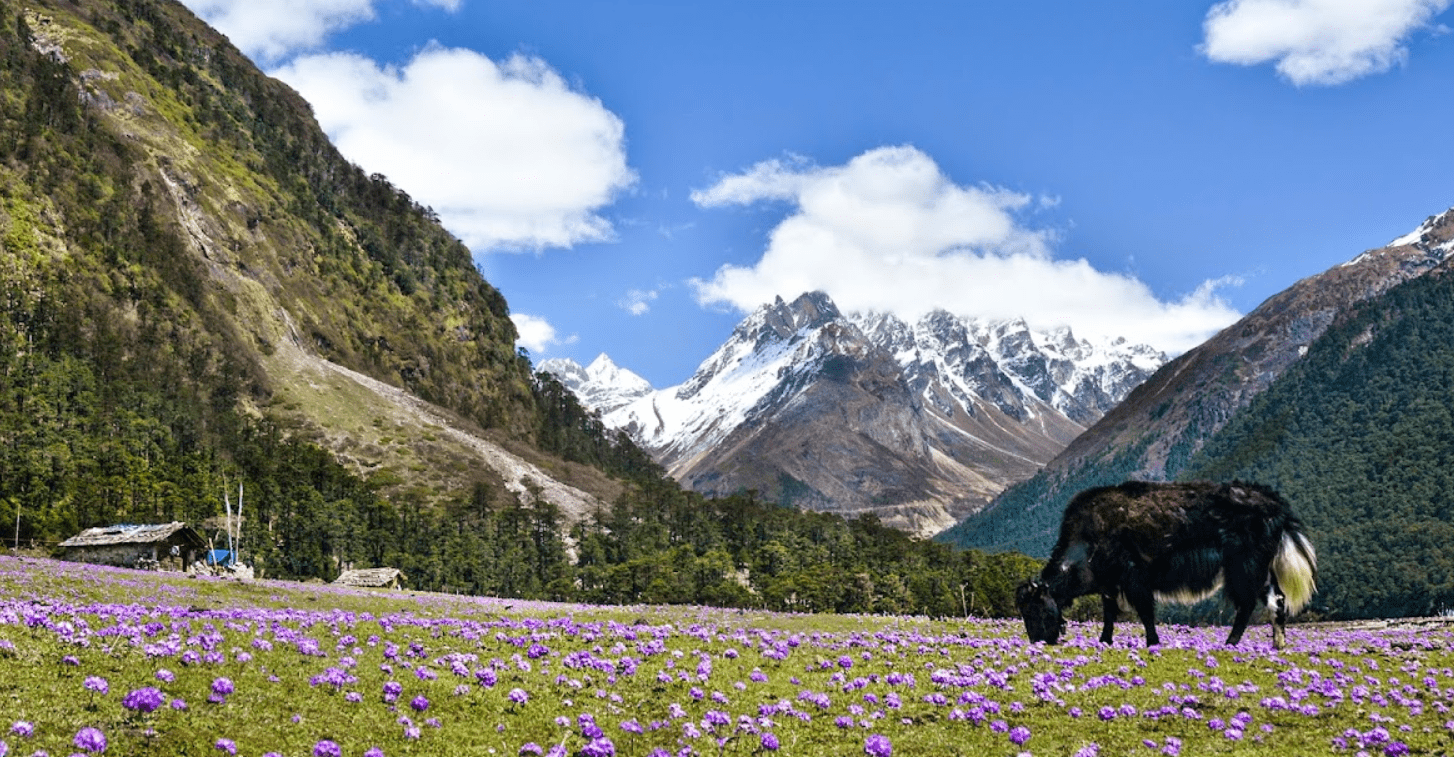Ujjayanta Palace, Agartala: Exploring capital cities often holds a unique charm. We relish strolling through bustling streets and hidden alleys, discovering the little wonders they offer. Our recent visit to Agartala, the capital of Tripura, was filled with such delightful moments. When searching online for things to do in Agartala, you’ll find a list of attractions that include Unakoti, Jampui Hills, Udaipur (the Tripura one, not the one in Rajasthan!), and notably Ujjayanta Palace. Although Ujjayanta Palace is situated in Agartala, the other sites mentioned are separate destinations, sometimes leading to confusion about their inclusion with Agartala itself. Even Lonely Planet has made this oversight, which was a bit disappointing.
So, what exactly can you explore in Agartala? The city, despite being the second-largest in Northeast India after Guwahati, has a rather laid-back atmosphere. It feels like a place frozen in time with its grand, predominantly white buildings. The Ujjayanta Palace, for instance, has been repurposed into a Government Office and Museum, adding to the city’s historical ambiance.
Close to the Ujjayanta Palace, there’s Ujjayanta Market, which is also an impressive white building. Many of the city’s older structures are painted white, possibly reflecting a local preference for this regal color. Tripura’s rich history as one of India’s oldest princely states is evident, and while I have detailed the state’s history in our Comprehensive Guide on Tripura, here I’ll focus on our impressions of Agartala and its tourist spots.
Ujjayanta Palace in Agartala, Tripura
Agartala might not have a plethora of attractions or the same level of bustle as other cities, but it offers a different kind of charm for those who enjoy exploring urban spaces, observing daily life, and uncovering historical and cultural gems.
What endeared Agartala to us was its warmth and the friendliness of its people. Bengali is widely used in government buildings and other establishments here, often more effectively than in Bengal itself. Tripura and Bengal both use Bengali as a primary language, adding a unique touch to the local experience.
Ujjayanta Palace is a jewel not only for Agartala but for Tripura as a whole. While Neermahal claims the title of a water palace situated in Rudrasagar Lake, Ujjayanta Palace is equally impressive. This grand white palace, centrally located in Agartala, now functions as a Government office and State Museum.
Built in 1901 by Maharaja Radha Kishore Manikya, the palace’s name was bestowed by Rabindranath Tagore, reflecting the close relationship between Tripura and the poet. The palace replaced an older structure destroyed by the devastating earthquake of July 1897, which also heavily impacted Agartala. During this period, Tagore assisted his friend, the Maharaja, by arranging a loan from Bengal Bank, facilitating the construction of the new palace. Designed by Martin & Co from Calcutta, Ujjayanta Palace stands as a symbol of modern Tripura. The construction began in 1898 and concluded in 1901.
The palace’s architecture blends neo-classical and renaissance styles, featuring two storeys and three magnificent domes. Surrounded by Mughal-inspired gardens with fountains, artificial lakes, and flower beds, the interiors showcase a mix of Persian, Indian, oriental, and European styles.
Today, Ujjayanta Palace serves as both a Government Office and a State Museum, having previously housed the Tripura State Assembly until 1993.
Inside Ujjayanta Palace or Tripura State Museum
Part of Ujjayanta Palace has been converted into the Tripura State Museum, which houses a significant collection of artefacts and exhibits. It provides insights into the people, tribes, and culture of Tripura, including a section dedicated to Rabindranath Tagore’s writings and correspondence with Tripura’s royalty. Visitors enter the museum from the ground floor and exit through the first floor, with the grand staircase adding to the palace’s grandeur.
Ujjayanta Palace Gardens
The palace complex, although extensive with multiple gates, is accessible to tourists only through the main entrance near Ujjayanta Market Complex. The large Indian flag and an “I Love Agartala” sign make it a perfect spot for memorable photographs.
Ujjayanta Palace Entry Time
The Ujjayanta Palace complex, including the Tripura State Museum, is open from 11 AM to 1 PM and 2 PM to 6:30 PM. It remains closed on Mondays, the second and fourth Saturdays, and government holidays. The gardens are open from 5:30 PM to 9:00 PM and follow the same closure schedule.
The entry fee is modest, with INR 20 for Indian visitors and INR 150-200 for foreign tourists. Additional fees apply for DSLR cameras. Bags are not allowed inside; however, lockers are available at the gate.
Jagannath Temple
The Jagannath Temple, built by the Tripura kings, is painted in red and yellow and dedicated to Lord Vishnu. The temple’s placement reflects the king’s devotion, marking the start of his day with visits to these sacred sites.
Laxmi Narayan Temple
Situated near the main entrance of Ujjayanta Palace, Laxmi Narayan Temple was constructed by Maharaja Birendra Kishore Manikya in 1910 AD to honor his father, King Radha Kishore Manikya. It remains a busy spot for locals, especially in the evenings.
Uma Maheswar Temple
Brightly painted in red, Uma Maheswar Temple is dedicated to Lord Shiva and Goddess Parvati. Established by King Bir Bikram Kishore Manikya in 1938, it features beautiful idols of the deities.
Durga Bari
Located at one corner of Ujjayanta Palace, Durga Bari is dedicated to Goddess Durga. The temple hosts grand celebrations during Durga Puja.
Gedu Miyan Mosque
Gedu Miyan Mosque, located in Shibnagar, boasts impressive architecture. Founded by Gedu Miyan, a former mahout and motor garage worker, the mosque features towers, minarets, and intricate artwork.
Tripura Heritage Park
Heritage Park showcases Tripura’s cultural and tribal diversity. Spanning 12 acres, it includes miniature models of famous Tripura landmarks. Located on Agartala-GBP Hospital Road, it provides a comprehensive glimpse of Tripura’s heritage.
Heritage Park Timings:
- March – September: 10 AM to 6 PM
- October – February: 10 AM to 5 PM
- Closed on Tuesdays
Chaturdash Devta Temple
Built by King Gobinda Manikya in 1666-67 AD, Chaturdash Devta Temple features 14 idols representing various Hindu gods and goddesses. The annual Kharchi Puja attracts visitors from both tribal and non-tribal communities, who participate in rituals and processions.
Akhaura Integrated Checkpost
Located near the India-Bangladesh border, Akhaura Integrated Checkpost hosts a daily flag-lowering ceremony similar to the Wagah border. Inaugurated on November 17, 2013, it facilitates cross-border trade and passenger movement. The ceremony, held at 4:45 PM, is an engaging experience where visitors can witness military precision and cross-border camaraderie.
Places to Visit from Agartala
Several destinations are accessible from Agartala for day trips or overnight stays. For more details, refer to our Tripura Travel Guide. Here’s a brief overview:
- Kamalasagar Lake and Kasba Kali Temple: Known for the Kali temple, lake, and Indo-Bangladesh Border Haat. Located 25 km from Agartala. Ideal for a day trip.
- Udaipur: Famous for Tripura Sundari Temple and lakes. Approximately 50 km from Agartala. Recommended for an overnight stay.
- Sepahijala Wildlife Sanctuary: Notable for its zoo and Phayre’s Langur. About 26 km from Agartala. Ideal for a day trip.
- Neermahal, Melaghar: Renowned for Neermahal Water Palace. 50 km from Agartala. Suitable for a day trip from Udaipur.
- Unakoti: Known for its archaeological significance and Shaivite pilgrimage. 135 km from Agartala. An overnight stay in Dharmanagar or Kailasahar is recommended.
- Pilak: An archaeological site. 135 km from Agartala. Can be visited as a day trip from Udaipur or as an overnight stay.
- Chabimura: Famous for its archaeological and historical significance. 93 km from Agartala. An overnight stay in Udaipur is advisable.
- Jampui Hills: A hill station recommended for an overnight stay. Located 200 km from Agartala.
Agartala Travel Guide (FAQs)
- How to reach Agartala?
Agartala is accessible by air, with flights from major cities, by train, with connections from Howrah, Guwahati, and Silchar, and by road, with overnight buses from Guwahati and Siliguri. The city is close to Bangladesh, with buses from Dhaka taking 4-5 hours. - **Best time to visit Agartala?**
The ideal time to visit is from October to March, avoiding the monsoon and the extreme summer heat. - Accommodation options in Agartala?
Agartala offers a range of accommodations, including hotels and guesthouses. For budget stays, options like Hotel Ritz, Hotel Sonar Tori, and Hotel Palace Inn are available. - Local cuisine in Agartala?
Agartala’s local cuisine includes Bengali and Tripuri dishes. Popular eateries include Jagannath Bhavan, Mitali Restaurant, and Dosa Plaza. - What to buy in Agartala?
Agartala is known for local handicrafts, bamboo products, and traditional Tripuri textiles. The Ujjayanta Market and other local markets are ideal for shopping.



